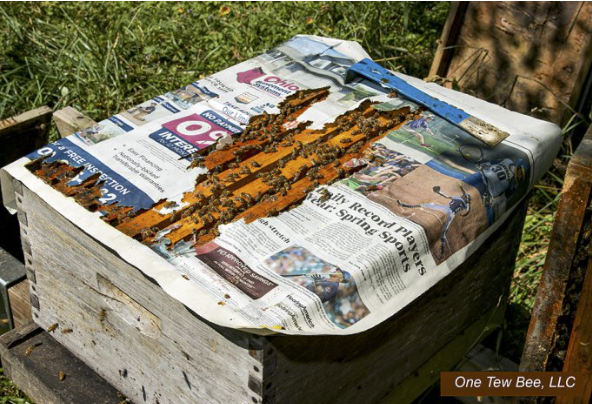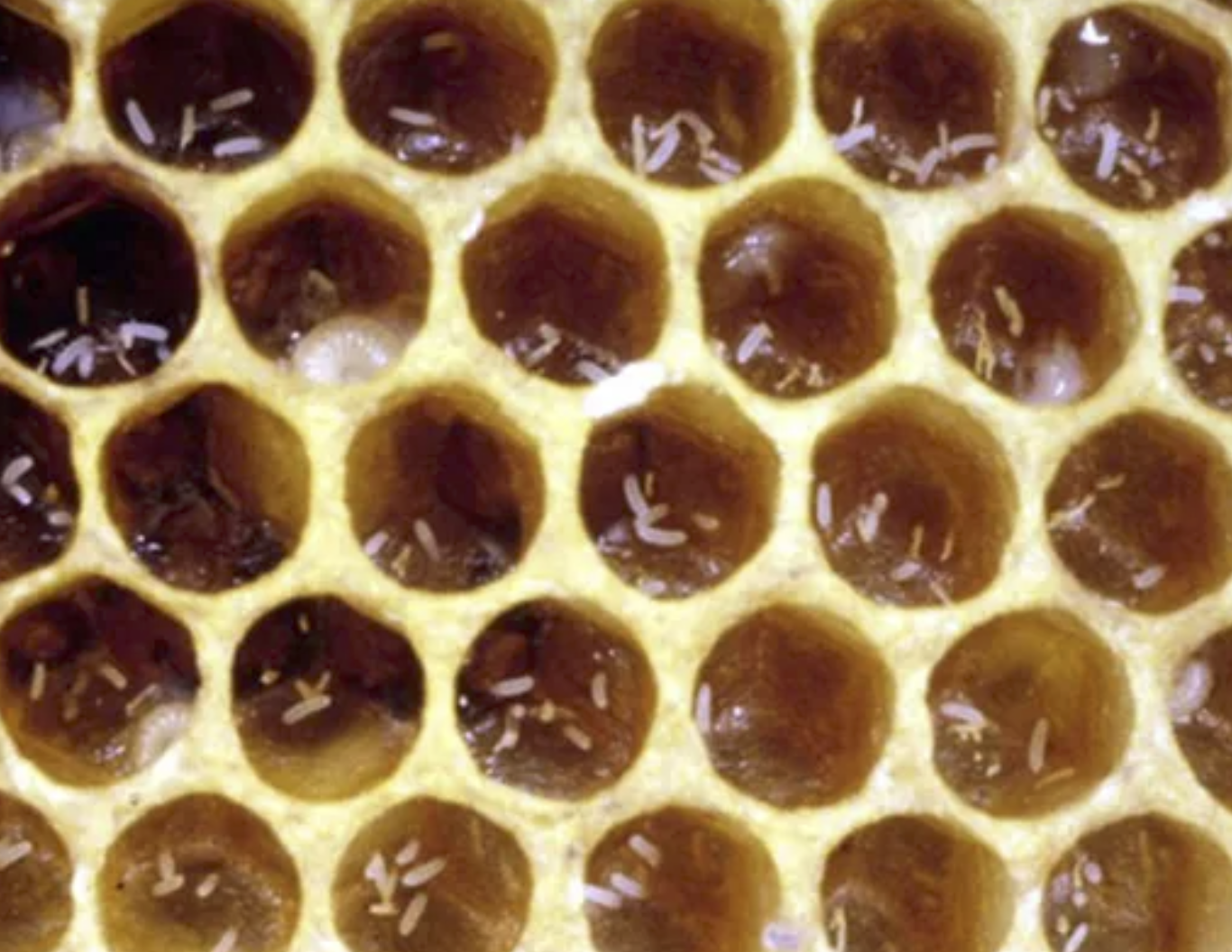WHEN QUEENS GO MISSING AND WASPS TRY TO MOVE IN
Time really does fly — sometimes faster than a bee in a nectar rush!
June seemed to vanish in a blur of blossom and buzzing wings, and somehow, here we are already in July.
Yes, I’m late with last month’s blog… but in my defence, the bees haven’t taken a day off, and they’ve certainly kept me on my toes! I’ve been busy tending not just my original hives in the village I used to live in, but also a new one right here in the village where I live now - and as you know - I’m looking after a hive for a lovely local lady.
So please… a little sympathy? Or at least a touch of leniency for a beekeeper whose June was swallowed up by hive inspections, queen spotting, super-stacking, and dashing between villages with a smoker in hand! No swarms this time, thankfully — just the constant hum of bees reminding me who’s really in charge!
When Queens Just Don’t Stick Around
JOINING TWO HIVES
©BeeCulture
Every beekeeper knows that not every season goes to plan. This year, I’ve had more than one hive struggle to keep a queen. Whether it's down to poor mating weather, (surely not it’s been so hot). or just sheer mystery, I’ve found myself dealing with a couple of queenless colonies. It’s frustrating, and even a little disheartening, to see all that broodless comb and anxious workers wandering without purpose.
Sometimes a new queen emerges but never returns from her mating flight. Other times, she's accepted for a while and then mysteriously disappears. When you’ve tried requeening and it just isn’t working, sometimes the best approach is to unite a struggling colony with a stronger one. Two weak hives joined together (using the newspaper method—if you know, you know!) can become one thriving colony. It’s not ideal, but sometimes it’s the only way to keep the bees going until better conditions return.
The Trouble With Laying Workers
One of the sadder tasks I have had to face is managing a hive that has developed laying workers. This happens when a colony loses its queen and, over time, some of the worker bees begin to lay unfertilised eggs. Unfortunately, these eggs can only develop into drones (male bees), and without a queen, the colony has no future.
MULTIPLE EGGS IN SINGLE CELL = LAYING WORKER
©Honeybeesuite
By the time laying workers are present, the colony is often confused and disorganised. Even if a new queen is introduced, the workers may reject her — the hive no longer recognises what it truly needs.
The only humane and practical solution is to shake out all the bees. It feels a bit brutal, but here’s what happens:
The entire colony is shaken out far from the hive — often in a field or quiet place at least 20–30 metres away. The young laying workers, who haven’t yet learned to fly, will be unable to return. The older flying bees, however, will instinctively return to where their hive once stood.
Waiting for them is a new hive, clean and ready, with a frame of open brood from another healthy colony — and hopefully, a newly introduced queen they can accept. If all goes well, the returning foragers settle in and begin again, this time with a proper foundation for a healthy future.
But in my case, the colony was very weak. When the foragers flew back to where their hive had stood… there was nothing waiting for them. Instead, they had to rely on the mercy of their neighbours — drifting into nearby hives and hoping to be accepted.
It’s not an easy decision, nor a happy task, but sometimes it’s the only way to give the remaining bees even a slim chance of survival. Nature doesn’t always make it easy — and beekeeping certainly teaches you that.
Wasps: The Uninvited Guests
While all this has been going on, another threat has crept into the apiary — wasps. Typically, they become bolder and more aggressive in late summer, as their natural food sources begin to run low. But this year, they’ve arrived early and it’s only the beginning of summer.
Already, they’re targeting hives, sniffing out any weakness. They rob honey, feast on brood, and even attack adult bees. It’s a harsh reminder of how quickly conditions can shift — and how vigilant we need to be. Strong colonies can usually defend themselves, but weaker ones can be overwhelmed in a matter of days.
A strong hive can usually defend itself, but a weak or queenless colony is highly vulnerable. Once wasps get in, they can completely destroy a colony within days. It’s heartbreaking to watch. One minute, a hive is just clinging on; the next, it's been stripped bare.
To help prevent wasp attacks, I’ve reduced my hive entrances (making them easier to defend), If you keep bees yourself, now is the time to be vigilant. Watch for increased wasp activity at the entrances—and if your bees are spending more time fighting than flying, it’s time to take action.
Below is a link to a short video I made this morning - showing you how I prevent wasps entering my colonies.
https://youtube.com/shorts/Z-H_UjTqBSI?si=s_i3VQPkqjUjJerI
FINAL THOUGHTS
Beekeeping teaches patience, flexibility, and above all, respect for nature’s unpredictability. This summer has just begun and already it’s thrown its share of curveballs, but there’s still so much to learn and appreciate in every moment spent with the bees.
I’ll be back soon with more updates—and with any luck, a few new queens who’ve decided to stick around for the long haul.
Until then, keep your suits zipped and your entrances small!
(What can I say… I’m a poet and I didn’t even know it. 😉)

